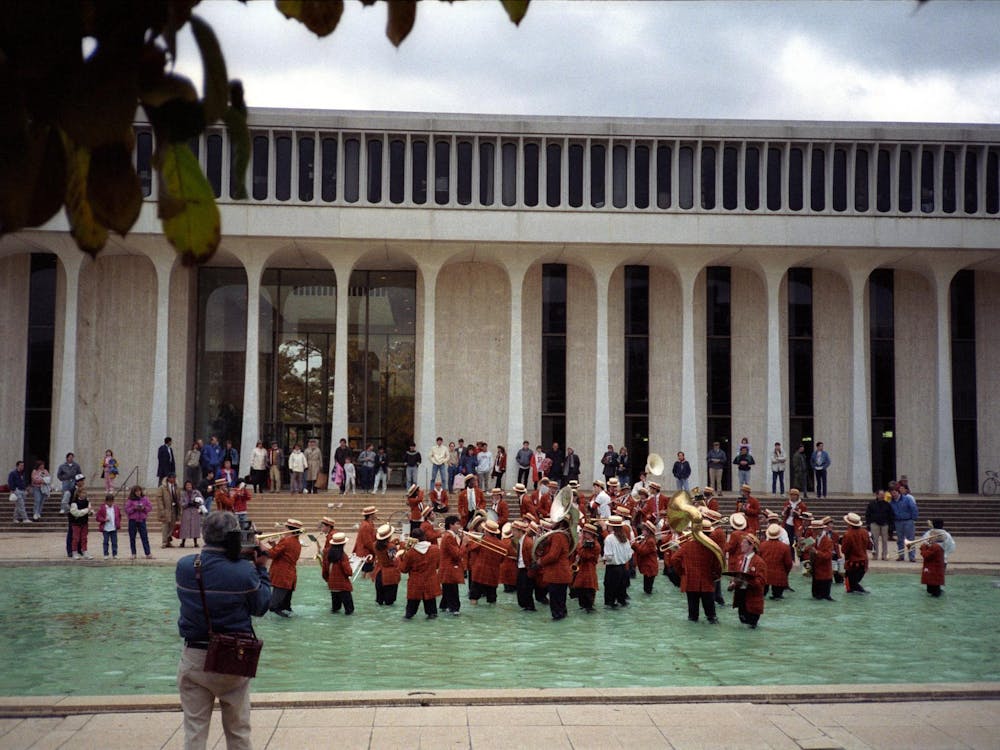With two games remaining in the regular season, there is little more the Princeton men’s basketball team can be doing to ensure its success. Not a single team in the Ivy League has managed to dethrone the Tigers this season, and Princeton (19-6 overall, 12-0 Ivy League) is currently riding an unstoppable 15-game win streak. On the flip side, Princeton is garnering little national attention for this feat, while the media focuses on the likes of Kansas, Villanova, and Kentucky — the usual suspects of men’s college basketball. In fact, only after winning 15 straight games did Princeton earn a single measly vote in the weekly national rankings.
In a season full of college basketball drama, it is worth placing Princeton’s performance within the wider national context. While it is well known that the Ivy League does not usually measure up to the likes of the Big 12, the Tigers’ recent success implores us to analyze the barrier between the Ivies and the remainder of the NCAA competition. Such findings will help us understand the significance of the team’s recent successes.
As a starter, we can compare Princeton to the current most elite team in the NCAA, the University of Kansas. Having won all seven of their most recent games, including impressive wins over No. 4 Baylor and No. 9 West Virginia, the Jayhawks secured the NCAA’s top ranking this past week. For our purposes, Kansas will serve as a metric of the NCAA’s most elite squads.
Taking a quick look at season averages of major statistics reveals little difference between the two teams at hand. From a shooting and rebounding perspective, the Tigers and Jayhawks are neck and neck. The main difference resides in offensive production per game, with Kansas outscoring Princeton over 11 points per game, on average.
When comparing the basic statistics, it is hard to determine the difference between the two squads. What factors are lying beyond the stat lines, marking the respective calibers of the two teams? Of course, the elephant in the room is the difference in difficulty of schedules between the two teams: while the majority of Kansas’ opponents rank in the top 100 in the NCAA, just four of Princeton’s opponents have shared the same status.
To account for the disparity in schedules, the NCAA utilizes two key metrics to regularize difference so that teams can be compared on a fair scale. The first is colloquially known as Strength of Schedule, and it involves ranking all 351 teams in the NCAA based on the difficulty of their season matchups. Under the system, Kansas ranks 27th (Nebraska takes the top spot, for those who are curious), while Princeton comes in a whopping 151st place, still the highest in the Ivy League. The difference in schedule difficulty, as expected, accounts partially for the difference between the two teams.
Given schedule difficulty, though, how do we rank the NCAA teams based on their performance at the end of the day? The second of the two key metrics is Rating Percentage Index, which is the weighted average of a team’s record, as well as its opponents’ records. The calculation for RPI accounts for just 25 percent of the weight in a team’s own record, while the remaining 75 percent is actually dependent on a team’s opponents’ records.
For Princeton, this means that should the Tigers complete a season entirely undefeated, the team would still struggle to rank in the tier of the Big 12. In fact, even given the team’s current impressive performance, Princeton peaks at a rank of 53rd, based on the RPI metric.
While the RPI and Strength of Schedule technique separate the Tigers from Kansas and the NCAA elite, it also illustrates the disparity between the Tigers and their Ivy League competition. Behind Princeton, Yale and Harvard compete for a distant second, followed by Penn.Columbia, Brown, Cornell, and Dartmouth straggle towards the bottom of the RPI rankings.
The data allows us to conclude that Princeton’s dominant success this season has distanced the Orange and Black squad far from the remaining Ivy competition. Even so, the data does not place Princeton in the upper echelon of the NCAA.
Should Princeton advance into the NCAA March tournament, which seems all but certain, the Tigers will have the chance to put the data to the test and measure themselves up against the best of college basketball.









